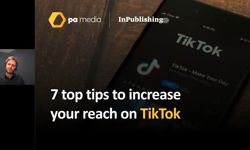
Q: How has does issue # 600 compare with issue # 1?
A: It has fewer pages (76 rather than 116), but what’s remarkable is how many of the sections are still going and remain popular with readers – Reviews, Workshops, Tips, Problems Solved, Consumeractive. Also astonishing is how rapidly technology has advanced since then. In our news pages we raved about a new “telephone with a black and white screen and hideaway keyboard” that lets you “surf the web and send email”. Better, it “even lets you save up to 40 of your favourite websites”. Its name? The iPhone. But this was the original iPhone, made by Linksys, on sale nine years before Steve Jobs held his own creation aloft to an open-mouthed world.
Q: The magazine makes much of the fact that it writes in "plain English" – why is that and what does this mean in practice?
A: It means translating technical terms in language that the everyday person understands. It also means not falling for the ‘curse of knowledge’, in which you assume that the person you are talking to shares your level of expertise. This fault afflicts most of our online and print rivals, giving us a unique voice and strong competitive advantage. We never use the kind of infuriating corporate-speak you hear from Microsoft executives who are more interested in impressing each other than making themselves understood by the public. When we have to use jargon, we highlight the word in red and explain what it means in the Jargon Buster. That’s also been ever present since the first issue.
Q: Computeractive has print and digital editions but no website? What's the thinking behind that?
A: It’s simply a matter of resources. We’re a small team on a tight budget, and so need to focus on what readers want most, and that’s long-form features, informed advice and detailed instructions, not clickbait headlines that inevitably leave the reader feeling short-changed.
Q: With magazine sales in long term decline, what is your strategy going forward?
A: The key is making Computeractive a trusted and indispensable service that readers come to rely on. This means making it easy to read in as many formats as possible, so people can read it in wherever and whenever they like. Further, as the quality of tech websites continues to deteriorate in a desperate race to the bottom, we’ll continue to offer the kind of authoritative, independent and crystal-clear advice readers simply can’t find anywhere else. We also need to make subscribing more attractive by adding extra benefits.
Q: Looking at the wider consumer magazine sector, what do you see as the main opportunities and threats?
A:
The main threat is shrinking newsstand space, but that’s not new. It just means we have to come up with better ideas to turn casual readers into loyal subscribers. There are countless opportunities to grow brands (podcasts, YouTube channels, Instagram, newsletters), but we need to ensure that they can be monetised and drive subscriptions, adding real value to the brand. It’s a bit old hat adding brand extensions simply because everyone else is doing it. Ultimately, knowing your audience is critical to legitimately developing the brand.Q: What's next for Computeractive?
A:
There are plans to give subscribers exclusive access to articles that they can search, download and print. We’ve bounced back spectacularly well from the first lockdown, when sales of some issues were half what we’d have normally expected, so the future looks bright.












